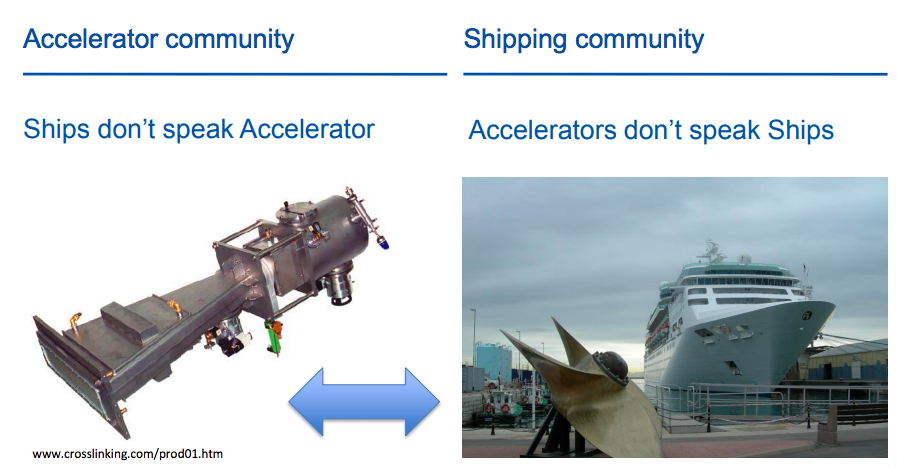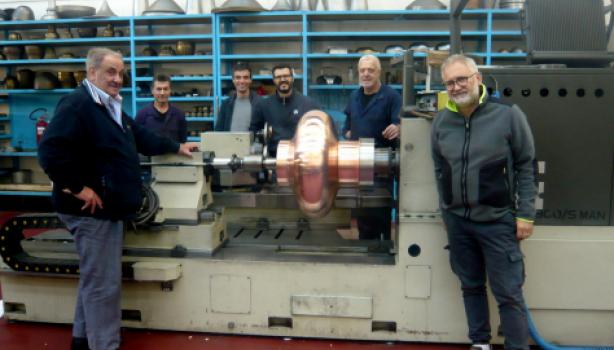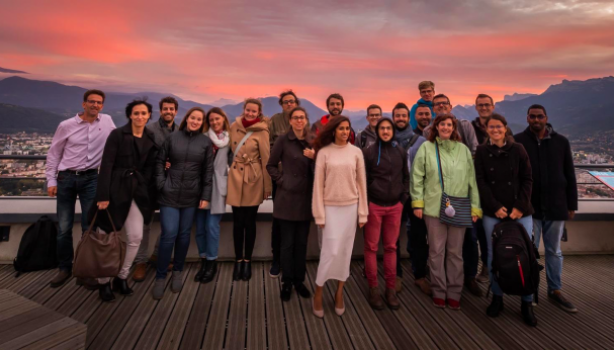Emission control has turned into the most important driving force for developments in the ship industry in line with the sustainable development goals that the UN set for the 21st century. In the past, extensive R&D effort has been allocated to control harmful emissions from ships given that approximately 90% of all goods traded worldwide travel on commercial ships that mainly burn low-quality heavy oil. ARIES aims at extending the accelerator reach to societal applications, and it brought together regulating authorities, shipping companies and industries, universities and research laboratories to explore a new avenue to reduce exhaust gas emissions from maritime trade.
The aim is to develop new accelerator-based gas treatment technologies laying at the border between physics and chemistry, which are applicable and practical for ship operators while they guarantee a high level of safety and reliability.
The combustion of gases inside the diesel engines emits harmful gasses in the atmosphere, a fact that raises concerns especially close to highly populated areas and closed seas. As a result, restrictive regulations apply in many areas as is the case of the Baltic sea and soon in many of the US coastal areas. Moreover, pollutant gases can often spread within 400 km from the coastline, influencing the air quality within several hundreds of kilometers. To cope with continuously increasing environmental demands, gas emissions from existing ships’ engines have to be reduced and a new world-wide regulations will be implemented as of 2021. Combination of cleaner fuels, engine modifications, add-on retrofits and other measures can be used to reduce exhaust gases emissions.
The main harmful gasses emitted from commercial ships are nitrogen oxides (NOx) and sulphur oxides (SOx). Primary methods aim at reducing the formation of these gases by using costly low-sulphur fuels and improving the engine design and maintenance, or by adopting proper retrofitting devices, such as scrubbers and selective catalytic reactors. These technologies allow a reliable reduction of SO2 or of NOx, while no system allows eliminating both, and all suffer the drawbacks of high cost, large footprints, an impact in the efficiency of the engine and additional fuel consumption.
To reduce further possible emissions, we need to develop innovative approaches for treating the exhaust gases after the engine. Accelerators could produce beams of electrons at an energy of 300-500 keV that would interact with the emission gases and induce molecular excitation, ionization and dissociation breaking the larger NOx and SOx molecules making easier the suppression of the remaining gases in a small “scrubber” placed after the accelerator in the exhaust pipe, which washes out using seawater the polluting molecules.

The electron-beam treatment technology was first developed in Japan in the 1970s and was recently revived in Poland to reduce carbon emissions from its power plants. The developments took place at the Warsaw Institute of Nuclear Chemistry and Technology (INCT), which is a member of ARIES and holds a patent on this technology. As 90% of electricity in Poland is produced from coal combustion and hence reducing gases that contribute to air pollution has been a key issue. A full-scale electron beam accelerator facility allowed to treat flue gases from coal-driven power plants, leading to a significant reduction in emissions of sulfur dioxide, nitrogen oxides and polycyclic aromatic hydrocarbons. The same technique could also help us reduce emission gases from ships.
In this process, the gases are cooled to between 70°C and 90°C with a spray of water and then diverted into a reaction chamber. There the wet gases are exposed to low energy electron radiation from an accelerator, not much different apart the higher energy from the tubes found in old television sets. Ammonia is then added to neutralize the SO2 and NOx, causing them to change chemical form and become solid aerosols. A high efficiency machine gathers and filters these sticky particles, converting them into high-quality fertilizer with the remaining “clean” gases leaving through the chimney. Ship exhausts are different from power plant fumes, but an experiment at INCT treated with an electron beam fumes with the same composition as the exhausts of a ship engine. The results indicate that similar high-level cleaning efficiencies can be reached.
During the workshop, participants shared their experience from engine designing, gave feedback from research conducted on test facilities, and discussed results from measurements on ships in operation. Moreover, they discussed how one could achieve in an economical fashion the required emission levels that could meet new international regulations. There was a wide consensus that this technology is very promising, but it still requires testing first on real ship engines onshore and later in a marine environment aboard a ship. Additional R&D is required to fit the accelerator in the challenging environment of an engine room (or of a ship funnel!) as well as an economic analysis to highlight the financial advantages with respect to other solutions.
A key challenge for engineer designers is to ensure the highest level of safety and reliability of the equipment installed on ships, while taking into consideration the different types of applications on vessels operating around the world and emission control regulations between different regions.
All in all, this novel technique has the potential to reduce the marine diesel exhaust gas; a challenge that becomes particularly topical given the increasing need for transportation of goods and the tighter rules towards a greener environment. The meeting exemplified that the design and advancement of accelerators goes beyond fundamental physics and genuinely contributes to the goals of sustainable developments for the 21st century.
You can find more information about the meeting and a full list of the participants in the Indico page of the event.


